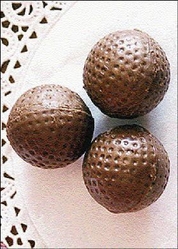Health trends
Published: Wednesday | August 19, 2009
Chocolate cuts death rate
Heart attack survivors who eat chocolate two or more times per week cut their risk of dying from heart disease about threefold compared to those who never touch the stuff, scientists have reported.
Smaller quantities confer less protection, but are still better than none, according to the study, which appears in the September issue of the Journal of Internal Medicine.
Earlier research had established a strong link between cocoa-based confections and lowered blood pressure or improvement in blood flow. It had also shown that chocolate cuts the rate of heart-related mortality in healthy older men, along with post-menopausal women. The researchers caution that clinical trials are needed to back up the findings of their study. They suggest that in the meantime, a bit of chocolate may not be amiss.
Source: Stone Hearth Newsletter & AFP

Artificial sweeteners not linked to cancer
Regular intake of artificial sweeteners like saccharin and aspartame do not increase the risk of certain cancers, like stomach and pancreatic, suggests a new study from Italy.
Results of a study with over 3,000 participants published in the journal Cancer Epidemiology Biomarkers and Prevention support the safety profile of the sweeteners, including aspartame, in the Italian population.
The use of sweeteners in food and beverage products is widespread and has gathered yet more pace as food firms seek to deliver healthier products, with less sugar, to consumers. Although all the sweeteners, used in the EU have been approved and are deemed safe by the food-safety authorities, Internet forums, newspaper reports and some scientific literature continue to garner suspicion.
After saccharin, aspartame is the second-most used artificial sweetener in the world. The sweetener has been the subject of cancer claim and counterclaim, particularly in Europe, following publication of findings by scientists from the European Ramazzini Foundation (ERF) that there was a link between the ingredient and cancer in rats (Environmental Health Perspectives, 2007).
Source: Stone Hearth Newsletter & confectionery news.com


